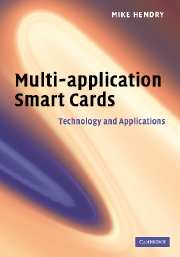19 - Organisation and structure
from Part IV - Implementation
Published online by Cambridge University Press: 11 August 2009
Summary
The previous five chapters have identified almost 100 suitable applications for smart cards, each with demonstrable benefits in some situations. Few people would imagine that all these applications could all reside on one card, although this would be technically possible, even today.
It is, therefore, useful to consider which applications have a good ‘fit’, so that they could share a card. Two perspectives are equally important:
The card and application issuers must find it both easy and profitable to work together;
For the card-holder, there should be a logical connection between the applications.
This chapter looks at each of these in turn: what makes it easy for organisations to work together and what are the barriers? And what ‘domains of use’ make sense to the card-holder?
Corporate culture
Probably the first factor that affects any co-operation or partnership between organisations concerns their corporate cultures and the personalities of the individuals involved. A large, slow-moving, risk-averse organisation is unlikely to make a good partner for a small, entrepreneurial business.
This, and indeed most of the organisational and commercial effects described in this chapter, can apply to multi-application projects involving several departments in one company, as well as to multiple companies. A successful co-operation in one country may not be transferable to other national operations of the same company.
In the case of card projects, attitudes to card-holders and users can vary widely, even within a sector.
- Type
- Chapter
- Information
- Multi-application Smart CardsTechnology and Applications, pp. 213 - 218Publisher: Cambridge University PressPrint publication year: 2007



